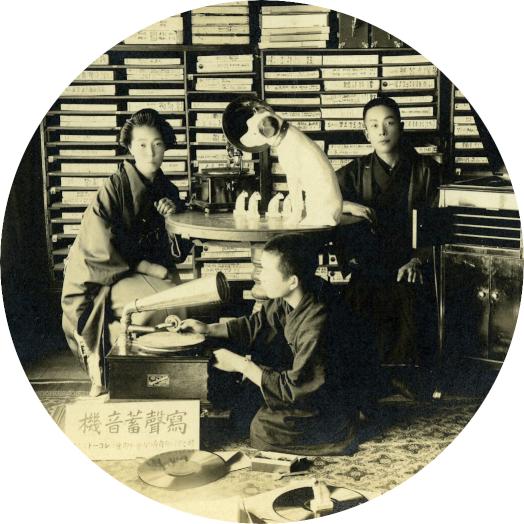Gramophone Concert “Jazz Summit (40) – Habanera Undercurrent”
2017.06.30
ACADEMIA
[Date] Friday, June 30 2017 18:00 (expected to end at 19:00)
[Venue] Intermediatheque 2F Lecture Theatre ACADEMIA
[Admission] Free
The number of seats is limited to 48. We request your comprehension.
[Organization] The University Museum, the University of Tokyo
[Cooperation] Hideki Umeda + Mac Sugisaki
[Program Conception] Intermediatheque Department, The University Museum, the University of Tokyo (UMUT)
A cycle of gramophone concerts is regularly held within the lecture theatre ACADEMIA of the Intermediatheque. This concert series focuses on the Satoshi Yuze record collection, from which we select famous 1920-1940s jazz recordings. We play them on the illustrious Victrola Credenza gramophone, in order to share a quality of sound which has now vanished from public spaces.
The European dance music style known as contradanza was imported in Cuba in the beginning of the 19th Century. Taking root there, it was again exported toward Europe and the United States as the habanera, creating a sensation. Its rhythm pattern consistently flows in early jazz. Jelly Roll Morton named it “the Spanish tinge,” and considered it was an essential element of jazz expression. Once Latin-flavored themes were incorporated within 1930s swing jazz and its fondness for exoticism, Cuban musicians started playing alongside jazzmen, working throughout the mid 1940s toward a unification of their sense of rhythm and the bebop style. Here, we will reconsider the complex relationship uniting Cuba and jazz music, from the habanera sensation to the birth of Afro-Cuban jazz.
■ On the Cycle of Gramophone Concerts
"Gramophone”, "Phonograph”, "Graphophone”, "Zonophone”… After the invention and diffusion of a mechanical system capable of recording and playing back sound, it took several decades before the terminology designating this device took root. It is said that meanwhile, the perplexity of people discovering this enigmatic piece of furniture emitting wonderful sounds was beyond imagination, ranging from curiosity to fear. However, with the generalization of LPs, CDs and digital audio files, gramophones have fallen out of use, and those remaining in museums simply exist as exhibition items. This concert series aims at activating the gramophone again as a playback device, in order to appreciate its possibilities anew.
The University Museum, the University of Tokyo holds two gramophones. One is the famous Credenza VV8-30, produced in Canada in 1925-1928 by Victrola. The other one is a unique device based on the Credenza with an original amplification system, made in 1931-1932 by instrument designer Isamu Hirabayashi (1904-1938).
These two gramophones will play a wide range of music, and various types of records. Among them, a most precious source of music is the Satoshi Yuze collection, donated to the University Museum in 2012. This private record collection, focusing on jazz music and amounting to over ten thousand items, also contains numerous SP records. By playing on the luxurious Victrola Credenza the collection constituted by Satoshi Yuze, which is the work of a lifetime, we will not only introduce rare recordings, but we will also share the quality and deepness of a sound lost with the advent of the digital era. In the age of the iPod, by getting together within the Intermediatheque lecture theatre and experiencing musical gatherings from another era, we intend to develop the museum space into a site for synaesthesia.

